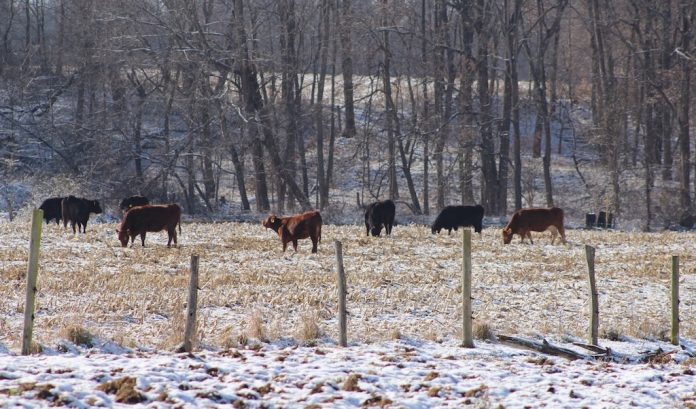How many animals will my pasture support? Now is a great time to sit back and think about what went well and what needs improved from 2018. This past year was one of the wettest in history, with many areas receiving measurable precipitation on half of the days.
Most of us did not have a problem with running low on pasture (making quality hay was another story). Green growing pastures were a welcome sight from spring through fall.
Very few people had to worry about how soon they would need to feed hay in the fall. If you have ran low on pasture in the past or are looking to add animals, now is the time to think about how many animals your pasture can carry and what can be done to increase that amount.
Grain farms put a lot of effort into maximizing their return per acre. Two hundred bushel per acre corn may not always be as economical at 185 but it sounds better at the coffee shop.
Sometimes the input cost to get a couple more bushels per acre are higher than the value of the crop. Pastureland can have the same problems. Adding a couple more cows to a 20-acre pasture may seem like a good way to increase sales by having a couple more calves to sell in the fall.
Will adding more animals exceed the carrying capacity of the pasture? If so, the reduced weaning weights of all the animals or the increased feed costs of making up for the shortage of forage may end up costing you money.
Feeding hay in August on a non-drought year is a good indication there are too many animals for the available forage resources. The carrying capacity has been exceeded. At that point, your profit margins shrink quickly.
Carrying Capacity
Carrying capacity is the number animal units that can be maintained in a given pasture area through a grazing season without harming the pasture. An animal unit is 1,000 pounds of grazing animal, which will remove approximately 26 pounds of forage on a dry matter basis, or 130 pounds of pasture forage in a day.
A mature cow with an unweaned calf is 1.25 animal units. This is based on a 1,250-pound cow, which is smaller than many of the cows today. A mature horse is 1.3 animal units. Five mature ewes with unweaned lambs is 1 animal unit and five mature does with unweaned kids is .75 animal units.
To put it another way, the carrying capacity is the amount of land you would need to support removal of about 130 pounds of forage daily. The amount of land necessary to support that production can vary greatly.
Stocking rate is another common term that you may hear and it is different from carrying capacity. Stocking rate is the actual animal units pastured in a given area. It can be above or below the carrying capacity.
Ideally, the stocking rate will be equal to the carrying capacity for maximum economic returns. A common stocking rate guideline in this area is approximately two acres per animal unit, which would equal a carrying capacity of 0.5 animal units per acre; however, this varies greatly from farm to farm depending on many factors.
These factors include the terrain, the type of forages present, time of year, rainfall, soil fertility and pH. Some management practices can be changed to increase carrying capacity while factors such as steep hillsides with shallow soil will always have limitations.
Increase carrying capacity
There are a number of ways to increase the carrying capacity including improving fertility using soil testing, which was discussed last month in this column. Another is allowing rest times for your pasture.
For example, fewer animals can occupy an area that has continuous grazing, more can be maintained with rotational grazing and even more can be fed with intensive grazing. Forages that are grazed intensively for short periods of time and then allowed rest periods are more productive than forages that are continually exposed to livestock.
Think of it as allowing an injury time to heal compared to constantly irritating the injury. If you currently use continuous grazing, think about ways you can split the pasture into two-four sections this year.
Temporary electric fencing is a great option while you figure out what division works best for your pasture. Consider water source options and locations.
If you already have two or three sections in your pasture, is there a way to double that? Studies cited by the University of Wisconsin indicated increases of two tons of dry matter per acre in some pastures by moving away from continuous grazing.
Plan ahead
You may find a surprising increase in carrying capacity by dividing pastures. If we have a dry year in 2019, will you have enough pasture to get by or will you have to feed hay early?
Can you make some inexpensive changes to what you have in order to increase your grazing opportunities? With low-profit margins, increasing the carrying capacity could be the difference between making and losing money.













